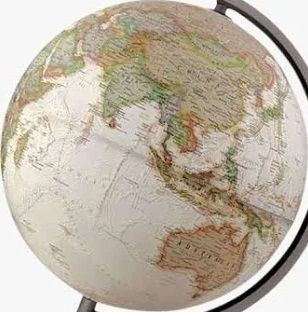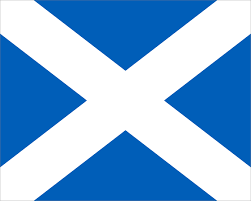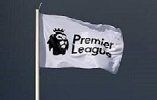As I write yesterday there was a doubling of the Scots presence so far this season in the top-flight of English football, now the Premier League, once simply the First Division. I'll leave you to work out the source. It has a twist. Moreover there are two caveats. The first is that we are not half-way through the fixtures yet. We do not know who will win either the FA Cup or the League. We shall see. And the second is that it went from one (1%) to two percent (2%) and, had it been last year, that doubling would have been halved.
And how, you may ask, can I say this? The answer is simple, if a more than a little nerdy, but then "carpe diem". Fate has provided us a moment, albeit an unwanted one, when with the ubiquitous help of the Internet mathematical analysis can triumph over the emotional variety and, perhaps for the first time, a year-by-year, season-by-season look at the Scottish influence, that is directly from Scotland, in and therefore on English football has been made possible.
And here are the results. They blend both League and FA Cup and in each case the management, teams/squads and team/club captains of those which did best every season. Then in the case of the League are again annually added the management of all the teams involved and whether or not the top scorer that year has been Scottish or not. Now you might agree or disagree with the blend but as with everything I do it is open to discussion and amendment. Your input is welcomed. But I have put some thought into it and do not think that what I have decided on can be described as particularly wrong or misguided so ask you to go with it, at least for just now.
And the just now is where we start. Organisationally top-flight football in England has seen three competitive iterations. From 1872 there was just the FA Cup. Scottish involvement peaked at 61% but averaged 25%, a quarter. Then from 1888-9 to 1992 it was joined by the Football League and over its ninety-five years of existence that input twice peaked at 45% but on average remained much the same, at 24%. And finally there was the arrival of the Premier League with its average of just 9.5%. The fall is plain to see but even the worst figure disguises something worse still. In the seven years from 2007 to 2013 last seven years of the Premier League back to 2014 the reality is that the average, annual contribution from Caledonia had been just over 11% yet in the seven years from then to now it has been just shy of 2%. However, there is a simple explanation. It is the retirement of Sir Alex Ferguson. Oh, what a difference one genius can make!
Furthermore, in keeping with the seven year theme in the period to 1995 that same average was 15.7%, whilst to 1992 it had been 21.6% but with Alex Ferguson at least this time not the answer. Whilst 1992 might have seen the introduction of the Premier League, 1995 was the year of Bozman. And it is Bozman that appears to have, if not quite rung the death knell of Scots in the English game, then to have made our contribution what can only be described as increasingly small dram. In the twenty-five years before the European Court's decision it had averaged 18%. In the precisely twenty-five years since it has been just under 8% with it clearly thought better/cheaper for football clubs south of the border to hire players and managers from elsewhere than North of the Border.
In fact there has never been a period in the history of British football, that is since 1872, that Scots in the game have ever been at such a low ebb. Even in that first year, long before the Football League was even a flash of inspiration in the Scots brain of William McGregor, when the Royal Engineers were beaten in the first FA Cup Final by The Wanderers, the input was also 8%. It might even have been 58%, if Queen's Park had not had to default and instead managed to raise the money for the travel to London to replay and win an already once-drawn semi-final against The Wanderers. Certainly by the following year as The Wanderers now faced Oxford University it was 25%, with the former now captained by Lord Arthur Kinnaird, future English FA President for thirty-three years with the family seat between Perth and Dundee, and might have been 75%, if once again Queen's Park had not had to default a semi-final, this time against the University. Indeed in first decade of the English competitive game, i.e. the FA Cup, the average Scottish involvement in the final was 20% and would only increase, in fact triple. In the following decade, the Scottish "Golden Age" as "combination" football became "scientific", it was 30% not least yet equally not entirely because in both 1884 and 1885 Queen's Park found the funding to play and win their semis, albeit to lose in both finals.
And it was there, even a little higher still at 33%, that it would remain for a further decade but with a rise in 1892, 1893 and 1894 to a peak of 45% in 1895 to be followed by a commensurate dip, the reason perhaps being money or put another way the professional, English Football League being formed in 1888 and its Scottish equivalent not being in place until 1894. In theory it meant that from that date some Scots players no longer needed to go south to earn a legitimate shilling but, of course, some, indeed many, still did, followed in time by not so much administrators (English clubs still liked to keep English hands on the the finances), but first secretary-managers, then player-managers and trainers, and finally manager-coaches. In the decade to 1911 Scots penetration remained at an average 32%, not least due to the exploits in London of John Cameron's Spurs in the FA Cup and of the North-Eastern clubs, Sunderland, Middlesbrough and most importantly in League and eventually in the Cup, Newcastle. Indeed, in 1907 in the League alone it was one percent shy of half (50%) and would never quite reach that level again. Even in 1927, in the decade that peaked with the 1928 Wembley Wizards, it was 46%, but would fall as low as 9% in 1930, 38% overall, and in 1960s 42% in the League and in 1965 45% overall, the year of the two-thirds Scots, Liverpool-Leeds Cup Final and Manchester United and Leeds topping the league; the era of Busby, Shankly and Revie.
However, it was at at that point the decline began. With an overall average penetration in the decade to 1971 of 27.5% the departure of first Matt Busby and then Bill Shankly from management and that of Don Revie from English, club management by 1981 it had fallen to 20% and 1950 levels. Ten years later still it was 17%. That was in spite of Kenny Dalglish. In fact with the coming of the Premier League it even increased momentarily. Between 1993 and Bozman's 1995 with Ferguson's feet finally under the table at Old Trafford, George Graham at Arsenal and again Dalglish, this time at Blackburn, the ten-year overall figures were 17%, 19% and 18% respectively but disguised better still 14%, 23% and finally 25% in the League.
But that was it. In no season, indeed in no seasons, I remind you, since that Bozman decision, have we seen the like in either League or Cup. In fact it is almost true to say that in the English game the Scottish one has almost been obliterated. Yet hope is not entirely lost. No team, at least in England's top flight, plays the traditionally English, long-passing game. Instead we have watched the introduction of a style, or styles, of football from countries and therefore in the feet of players and management minds where Scottish football is ignored but what I call "Scots" football, football taken to those countries by Scots, the Old Scots, short-, ground-passing, wide-full-back, triangular, ball-friendly game, is taken as native. Put that into the analysis last season and 3% becomes 44%. Discuss.



